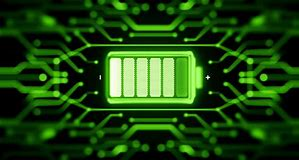
Renewable energy can be inconsistent, for example only producing energy at certain times of day or in certain weather. In order to keep energy supplies consistent, excess energy must be stored for the times when demand is higher than supply.
Lithium-ion batteries are commonly used to address this issue, however, there are concerns that lithium may become too depleted in the future to meet heavy production demands.
Sustainability is a major issue faced by the world today, hence it is also important to optimise the performance of lithium-free battery materials. These are generally cheaper and will lessen the demand on lithium.
Sodium-ion batteries are a cheap and abundant alternative to lithium ion, however there are still many materials challenges to address.
Methods that are used to make electrode materials in sodium-ion batteries are unsustainable because of the need for high temperatures and long durations, using a lot of energy. This is particularly detrimental in sodium-ion battery materials as large particles form making the diffusion of sodium ions slower and more difficult. This means that the energy capacity of the batteries is often lower than expected.
There is less of a barrier for the sodium ions if smaller particles are used, as they are able to move in and out of the electrode material more efficiently while the battery charges and discharges, improving capacity.
Smaller particles are difficult to produce using traditional high-temperature methods, but it is possible with a process known as biotemplating – a key part of my project.
Biotemplating works by using natural materials such as algae, cotton, or sugar which bond to the metal ions in the starting ingredients when mixed together in water. A uniform mixture such as this lowers reaction time and temperature because less energy is needed for the ingredients to come together and react.
When the solution is heated, the natural material prevents the metal ions from coming together to react at lower temperatures up until the natural material burns away. This delay in the ingredients reacting together gives the particles of the electrode material less time to grow, allowing smaller particles to form.
Energy storage will be vital to ensure a growth in uptake of renewable energy. For it to be viable long term, the cost of batteries and the manufacturing process must be kept low with a minimal impact on the environment.